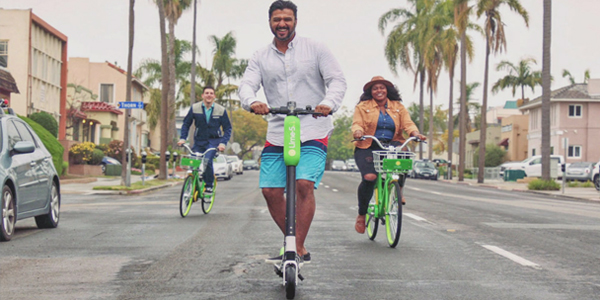The Successful Ride Of Lime To The Top Of Bike Sharing Sector
Bringing a startup’s valuation to $2.4 billion in less than two years alone can substantiate its skyrocketing growth and worldwide recognition. By a $310 million Series D financing round, the micro-mobility startup Lime becomes the leader in the industry. Since it opened its first market up in Greensboro, North Carolina, now it has expanded to hundreds of cities in more than 15 countries.
An Initiative To Make The Urban Life Simple
Going electric is visible in many industries, and the automobile is one of the areas that are hugely transforming into electric. Popular automobile companies have already introduced electric vehicles, and many have plans for the coming years. In short, the market is booming. Lime sprouted up in this context.
Bikes, e-bikes, and e-scooters rental service of Lime came into being out of an extraordinary vision to simplify urban life. The increasing number of cars made the city transportation tougher. Even though the scooter-sharing system was introduced in 2017, the industry started booming in 2017.
The year witnessed the launching of several scooter rental startups in America. The founders, Toby Sun and Brad Bao, began the journey of Lime in 2017 in Greensboro with innovative technologies.

The Novel Ideas In the Market
Even though dockless bike-sharing services that do not require a docking station has already existed, Lime made it more affordable and accessible. On price, they made a pretty convenient scale, starting at $1/30 min. Besides, no limit until the battery life finishes. The Lime app also shares its simple-interface to the success of the brand. With the app, a person has to do three steps: Locate, scan, and ride.
The Roadmap To Success
Lime started its journey providing bicycle rental with a fundraising of $12 million from Andreessen Horowitz in March 2017. Soon, it expanded to more cities in the United States. It covered a massive ride in the first year of its inception itself. In 2017, it recorded 1 million rides and over 150,000 users.
The team came up with its electric bikes, Lime E at the beginning of 2018, and is followed by the trail of Lime-S electric scooters. To enhance productivity, it partnered with Segway and the partnership with Segway let the company have a leap. The outcome of the tie-up was the development of transit pods, small self-driving electric vehicles.
The journey did not permit in two-wheelers, and it successfully implemented car-sharing in Seattle. It grew up as a big network named LimePod.
The biggest honor came to Lime’s way in August 2018. This time, it was the top multinational companies, Google and Uber.
The transportation multi-giant agreed to offer them electric bikes for the expansion of their Uber Bikes service. As Uber logo on Lime’s bikes boosted its growth. Google provided with its navigation to reach the company into new territories.
Even though there are several small electric bike-sharing ventures in the US, Bird is the only considerable competitor for Lime. 2018 and 2019 marked a super-growth in both companies’ revenue, but Bird is behind Lime. Besides, Lime was included in LinkedIn's Top Startups for 2019.
Moral of The Story
You have to deliver something extraordinary when a lot of brands sprout up in an industry in the same season. Lame’s success lies in the fact that it came up with the strategies that proved remarkable and convenient to its targeted audience.